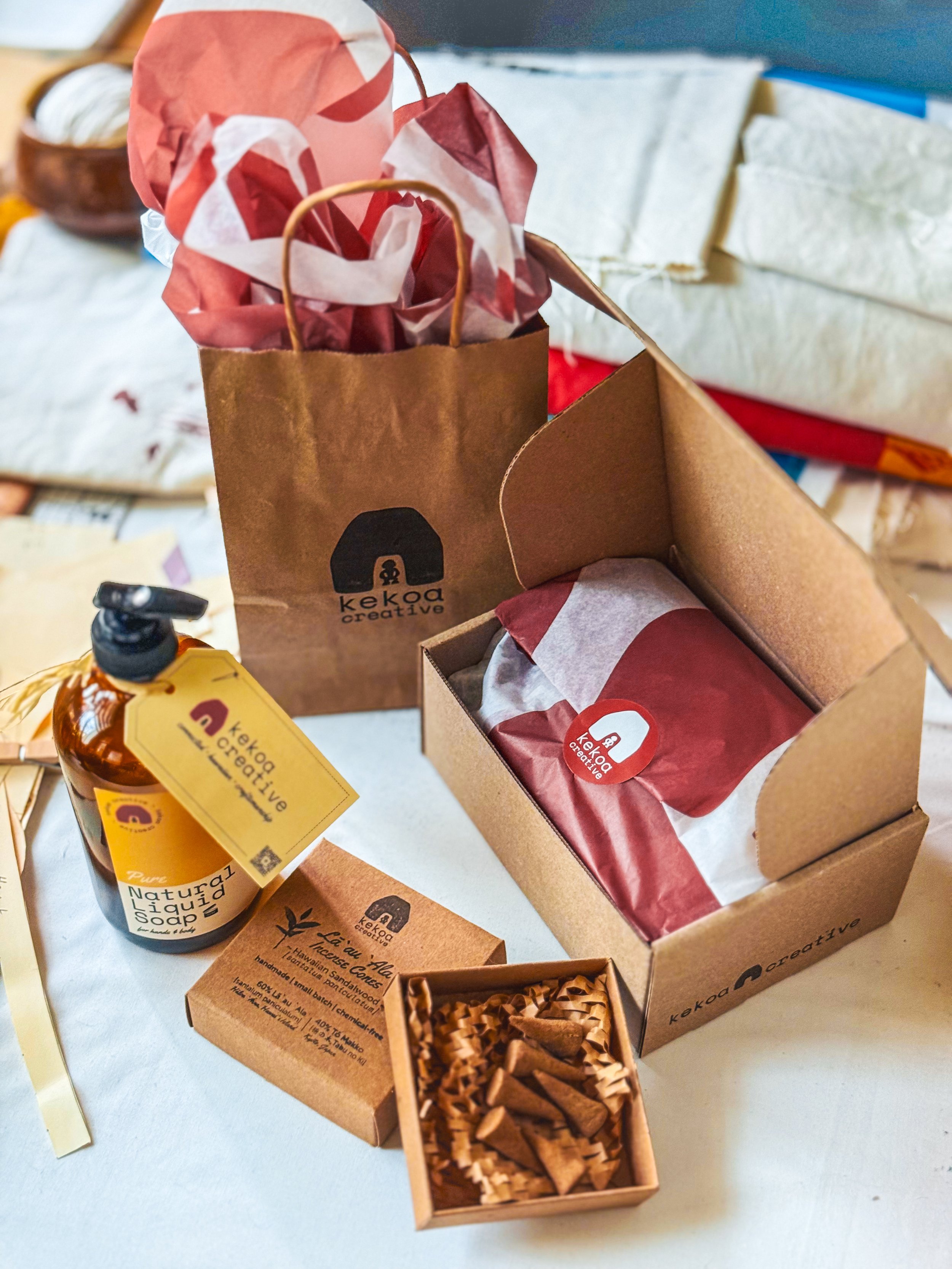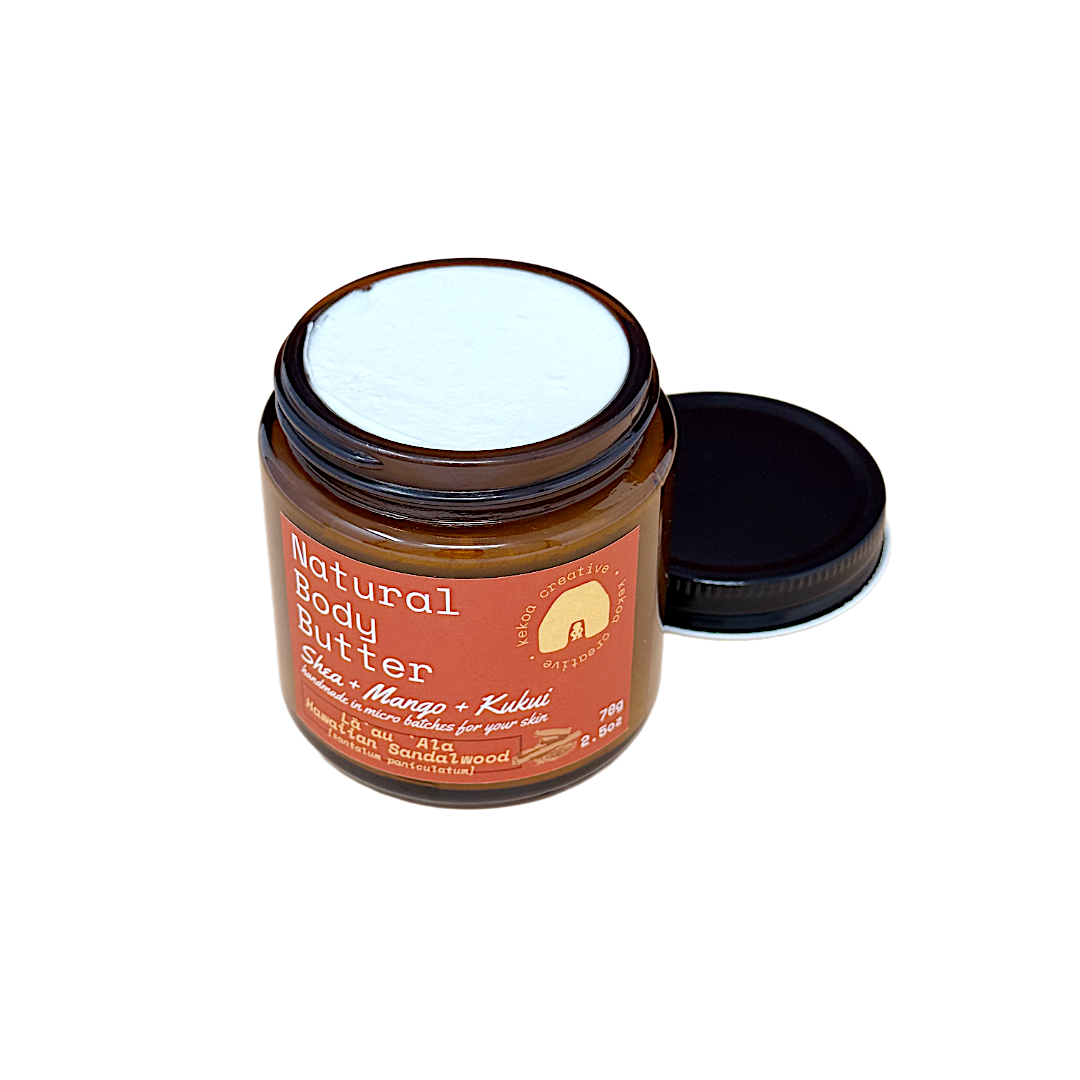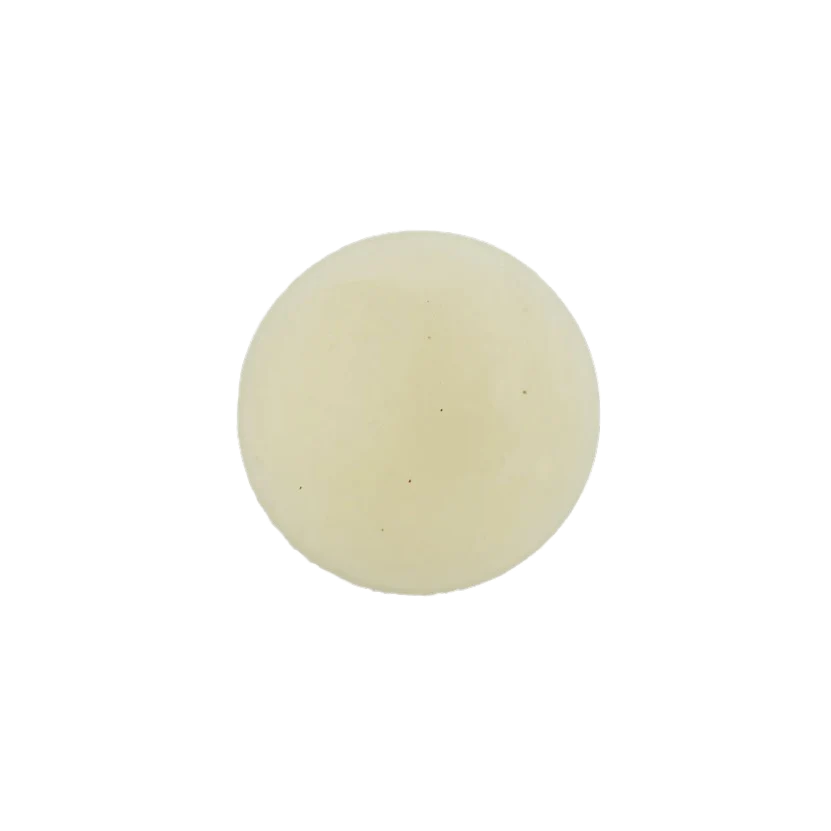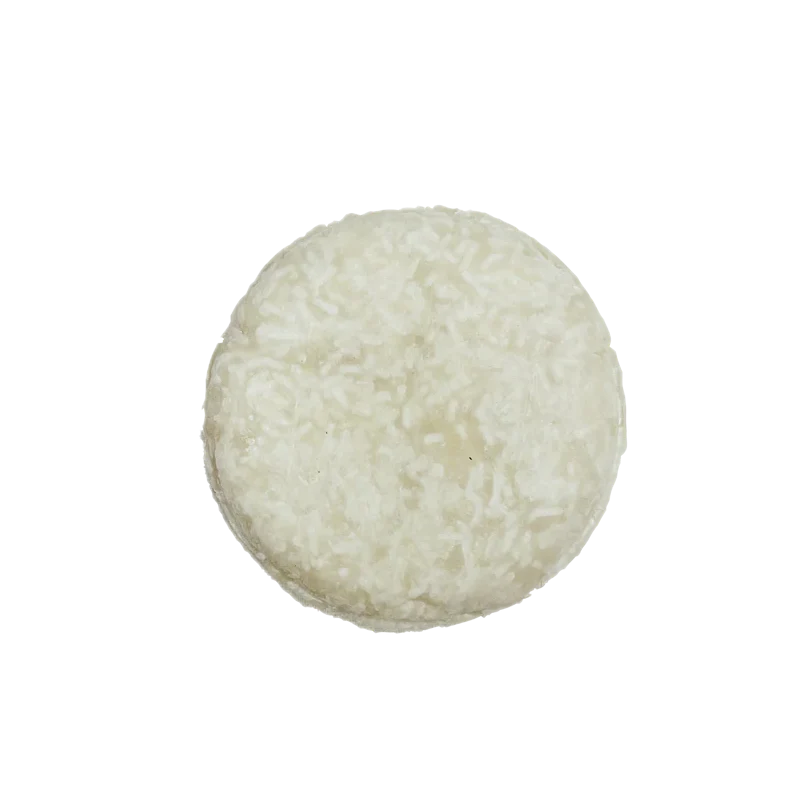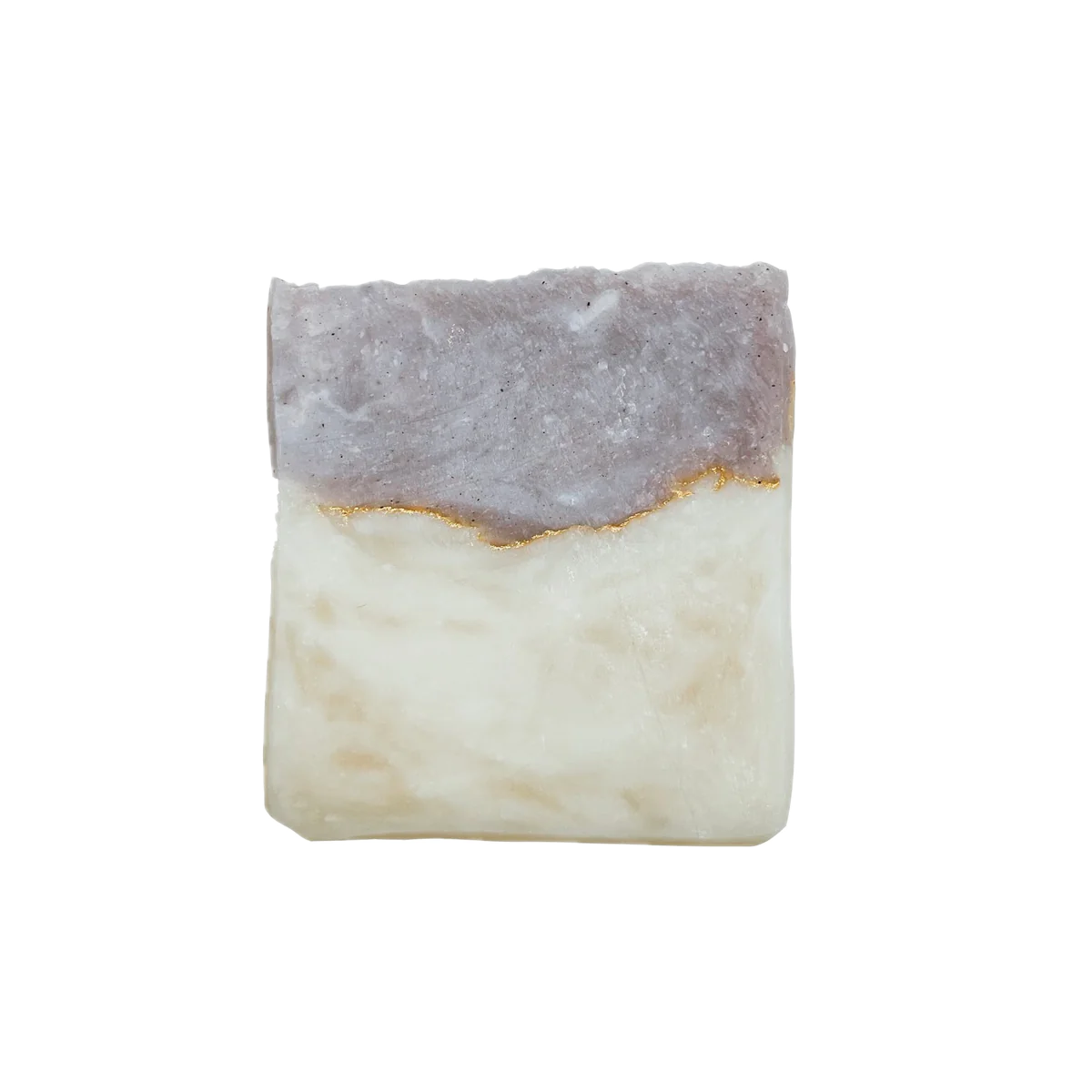Lonoikamakahiki: Honoring the Season of Abundance, Rest, and Renewal
As the days grow shorter and the air shifts with the coolness of autumn for those far from the equator, we enter a time of transformation. In the Hawaiian seasonal calendar, this marks the beginning of makahiki—a period traditionally spanning approximately four lunar months (roughly October through February) dedicated to honoring Lonoikamakahiki, the akua who personifies rain, agriculture, fertility, and peace.
Makahiki is not simply a "harvest festival" as it's often reduced to in Western interpretations. It is a complex system of cultural practice, environmental stewardship, and community care that reflects a deeply sophisticated understanding of natural cycles, resource management, and collective well-being. For kānaka ʻōiwi (Native Hawaiians), makahiki traditionally represents a time to rest from war, honor abundance, regenerate the land, and strengthen community bonds.
At Kekoa Creative, we see makahiki as a model for the values we center in our work: slow fashion, sustainability, rest as resistance, and mālama ʻāina (caring for the land). This season invites us to reflect on how we can live in better alignment with natural rhythms—both in how we care for the earth and how we care for ourselves.
Lonoikamakahiki: Akua of Rain, Fertility, and Peace
Lonoikamakahiki is the akua who personifies the life-giving forces of rain (ua), agriculture (mahiʻai), and fertility (hua). His presence is felt in the clouds that gather over the mountains, the rain that nourishes the crops, and the abundance that sustains communities. Lono is also the akua of peace and rest—during makahiki, traditional kapu (restrictions) on warfare were observed, allowing communities to focus on celebration, athletic competition (such as makahiki games), and collective care.
The moʻolelo (stories) of Lono are many, but one well-known account tells of Lono and his beloved wife, Kaikilani. In some versions of the story, Lono's grief over her death led him to leave Hawaiʻi, traveling across the ocean on a canoe with a tall mast and white kapa sails. He promised to return during the season that would come to bear his name—makahiki. This moʻolelo is deeply tied to the makahiki ceremonies, during which a tall pole wrapped in white kapa (called the lono or lonomakua) was carried in procession around each island, symbolizing Lono's return and the beginning of the season.
Late 18th-century figure of Lono, on display at the Louvre. Image Credit: By Rama - Own work, CC BY-SA 3.0 fr, https://commons.wikimedia.org/w/index.php?curid=56717230
It's important to note that these moʻolelo are not static myths—they are living narratives that have been passed down through generations, adapted and interpreted by different communities and lineages. The stories of Lono reflect the values of a people who understood that rest, regeneration, and honoring natural cycles were not luxuries—they were necessities for survival and thriving.
Traditional Makahiki Practices: Kapu, Celebration, and Regeneration
Mokomoko, boxing match, before Capt. Cook in Hawaiʻi, Thursday, Jan. 28th, 1770 [from illustration] by James Webber, draughtsman to the expedition.
During makahiki, several important kapu (restrictions and protocols) were observed:
Kapu on war and conflict: No battles were fought during makahiki. This was a time for peace, allowing communities to focus on abundance, celebration, and collective well-being.
Kapu on certain types of labor: Heavy agricultural work and some forms of resource extraction were restricted, allowing the ʻāina and kai to rest and regenerate. Many communities also observed this as a kapu on hunting, gathering, and eating meat and fish.
Hoʻokupu (offerings) and tribute: Communities brought hoʻokupu to aliʻi (chiefs) and kuahu akua, including food, kapa, and other goods. This was not simply taxation—it was a reciprocal system of redistribution that ensured resources flowed back to the community through feasts, games, and support.
Makahiki was also a time of celebration and athletic competition. Communities participated in makahiki games such as mokomoko (boxing), hakoko (wrestling), ʻume (hand wrestling), and hukihuki (tug-of-war). These games were not merely entertainment—they were expressions of strength, skill, and community pride, and they reinforced social bonds.
Perhaps most importantly, makahiki was a time to honor the cycles of the land. After months of planting, tending, and harvesting, the earth was given time to rest. This practice reflects a deep understanding of sustainable resource management—something that modern industrial agriculture has largely abandoned, often to devastating environmental effect.
Modern Observance and Cultural Reclamation
Traditional Hawaiian Games during Makahiki. Here we see kāne playing the game haka moa, or human-imitated chicken fighting. Image Credit: By Cpl. Rich Mattingly - http://www.marines.mil/unit/mcbhawaii/PublishingImages/2005/fight_hi.jpg, Public Domain, https://commons.wikimedia.org/w/index.php?curid=23184226
For many kānaka ʻōiwi today, reclaiming makahiki practices is an act of cultural resistance and revitalization. After more than a century of colonization, suppression of Hawaiian language and culture, and the illegal overthrow of the Hawaiian Kingdom in 1893, many traditional practices were disrupted or driven underground. Today, communities across Hawaiʻi and in the diaspora are actively restoring makahiki observances as a way to reconnect with ancestral knowledge, strengthen cultural identity, and practice sustainable living.
Modern makahiki observances may include:
Hoʻokupu ceremonies at heiau (traditional Hawaiian temples) and cultural sites
Makahiki games and athletic competitions organized by schools, community groups, and cultural organizations
Loʻi kalo (taro field) restoration and agricultural projects that honor traditional planting cycles
Educational workshops on Hawaiian seasonal practices, moʻolelo, and environmental stewardship
Rest and reflection as a form of resistance against the relentless pace of capitalism and colonialism
Even for kānaka living far from Hawaiʻi—in the diaspora—makahiki offers a way to stay connected to cultural rhythms. Observing makahiki can be as simple as honoring rest, giving thanks for abundance, and making time for community and family. It's a reminder that Hawaiian culture is not confined to the islands—it lives wherever kānaka carry it.
Makahiki Values and Kekoa Creative: Slow Fashion, Sustainability, and Mālama
At Kekoa Creative, the values of makahiki are woven into everything we do. Slow fashion, sustainable practices, and mālama (caring for the land, water, and each other) are not just buzzwords—they are commitments rooted in Hawaiian worldview.
Rest as Resistance
In a culture that glorifies overwork and constant productivity, rest is a radical act. Makahiki teaches us that rest is not laziness—it is essential for regeneration, creativity, and long-term sustainability. At Kekoa Creative, we honor this by rejecting fast fashion's exploitative pace and instead creating clothing and body care products slowly, thoughtfully, and with intention.
Honoring Natural Cycles
Just as makahiki honors the cycles of planting, growth, and rest, we honor the cycles of the seasons in our product offerings. Our autumn and winter body care products—like our nourishing body butters and Keālia Organics body bars—are designed to support your skin as the weather shifts. Ingredients like kukui nut oil(which we'll explore in depth in our next article) provide deep moisture and protection during cooler, drier months.
Mālama ʻĀina, Mālama Kino
Makahiki is a time to care for the land so it can continue to sustain us. At Kekoa Creative, we practice mālama ʻāina by sourcing organic, sustainably harvested ingredients, using compostable packaging, and partnering with businesses that prioritize environmental stewardship (like Hāloa ʻĀina and Keālia Organics).
We also believe in mālama kino—caring for the body. Our body care line is formulated with natural, plant-based ingredients that nourish your skin without harmful chemicals. Using our products is a way to practice self-care that honors both your body and the earth.
Community and Abundance
Makahiki emphasizes collective well-being and shared abundance. At Kekoa Creative, we support this value by partnering with other Native Hawaiian and Pasifika-owned small businesses, ensuring that our work uplifts our communities. When you shop with us, you're supporting a network of creators who are committed to cultural authenticity, sustainability, and mutual care.
Seasonal Rituals: Pomander, Pō/Ao, and Wearable Moʻolelo
Makahiki invites us to create rituals that honor the season. One way to do this is through scent. Our Pomander natural body butter and natural liquid soap brings the warmth of autumn into your space with notes of clove, cinnamon, and sweet orange. Use it as part of a seasonal ritual as a way to mark the transition into the cooler months and invite a sense of abundance and comfort.
Our trash tees and hoodies also carry moʻolelo. The he mano ka niho (multitudinous teeth) hoodie, for example, features a pattern that speaks to strength, resilience, and the duality of Pō and Ao—darkness and light, rest and action. Makahiki is a season that honors both: the darkness of winter (Pō) as a time of rest and reflection, and the light of renewal (Ao) that follows. Wearing these designs is a way to carry cultural knowledge and values with you.
Hāʻule Lau: Letting Go and Preparing for Renewal
The Hawaiian term hāʻule lau is an adaptation to the need to refer to the Autumn/Fall season experienced by non-tropical areas. It refers to the falling of leaves—a natural process of release and transformation. Just as trees let go of their leaves to conserve energy and prepare for new growth, makahiki invites us to let go of what no longer serves us and make space for renewal.
This might mean:
Letting go of unsustainable habits and embracing slower, more intentional living
Releasing the pressure to be constantly productive and allowing yourself to rest
Clearing physical and emotional space to welcome new growth in the coming year
At Kekoa Creative, we see hāʻule lau as a metaphor for the work we do: releasing the harmful practices of fast fashion and making space for something better—clothing and body care that honors people, culture, and the earth.
Shop Seasonal Products and Share the Moʻolelo
As we move deeper into makahiki season, we invite you to honor your body and the earth by choosing products that align with these values. Our autumn body care collection—featuring kukui nut oil, organic shea and mango butters, and sustainably sourced ingredients—is designed to nourish your skin during the cooler months.
We also encourage you to share this article with others who are interested in Hawaiian worldview, cultural reclamation, and specialized natural skincare. The more we share these moʻolelo and practices, the more we contribute to the revitalization and protection of Hawaiian culture.
Mahalo nui, and I hope you found something by reading this article as we enter this season of rest, abundance, and renewal.aloha nō,~ Kekoa.ʻŌlelo Hawaiʻi Glossary
Akua: Deities; personifications of natural orders and phenomena
Aliʻi: Chiefs, leaders
Ao: Light, day, enlightenment
Hāʻule lau: Falling leaves; autumn
Heiau: Traditional Hawaiian temple or place of worship
Hoʻokupu: Offering, tribute, gift
Hua: Fruit, seed, offspring; fertility
Kaikilani: Name of Lono's beloved wife in some moʻolelo
Kānaka ʻōiwi: Native Hawaiians (literally "people of the bone")
Kapa: Traditional Hawaiian bark cloth
Kapu: Restriction, taboo, protocol
Kuahu: stone shrine
Loʻi kalo: Taro field
Lonoikamakahiki: Akua of rain, agriculture, fertility, and peace; the season of makahiki is named for him
Mahiʻai: Farmer, agriculture
Makahiki: Traditional Hawaiian season of rest, abundance, and celebration (approximately October–February)
Mālama: To care for, protect, nurture
Mālama ʻāina: Care for the land
Mālama kino: Care for the body
Moʻolelo: Story, history, narrative
Pō: Night, darkness, the realm of ancestors and creation
Ua: Rain
Sources
Kamakau, Samuel M. Ka Poʻe Kahiko: The People of Old. Bishop Museum Press, 1964.
Malo, David. Hawaiian Antiquities (Moʻolelo Hawaiʻi). Bishop Museum Press, 1951.
Pukui, Mary Kawena, and Samuel H. Elbert. Hawaiian Dictionary. University of Hawaiʻi Press, 1986.
Kamehameha Schools. "Makahiki: A Time of Peace and Celebration." Kamehameha Schools Cultural Resources.
ʻAwaiaulu: Hawaiian Literature Project. Various moʻolelo and traditional accounts.
Kameʻeleihiwa, Lilikalā. Native Land and Foreign Desires: Pehea Lā E Pono Ai?Bishop Museum Press, 1992.




![Mokomoko, boxing match, before Capt. Cook in Hawaiʻi, Thursday, Jan. 28th, 1770 [from illustration] by James Webber, draughtsman to the expedition.](https://images.squarespace-cdn.com/content/v1/64572801a3147a4bfda58d1d/fe8d0020-7b17-479a-8098-acbe6640f0cf/Mokomoko+illustration+-+James+Webber+_+1770)







